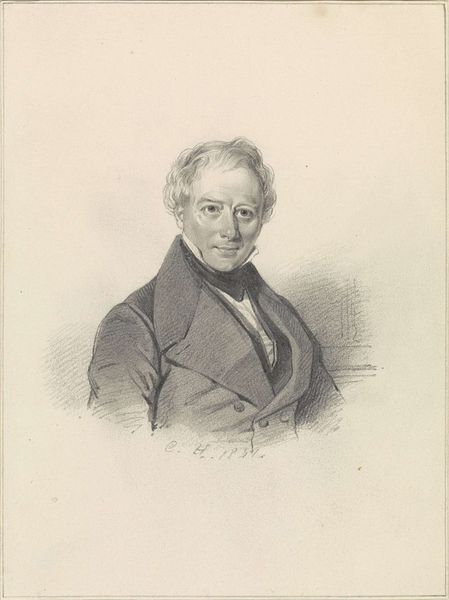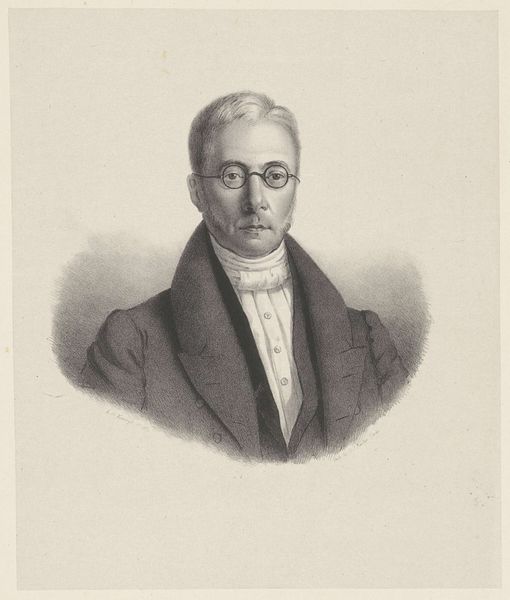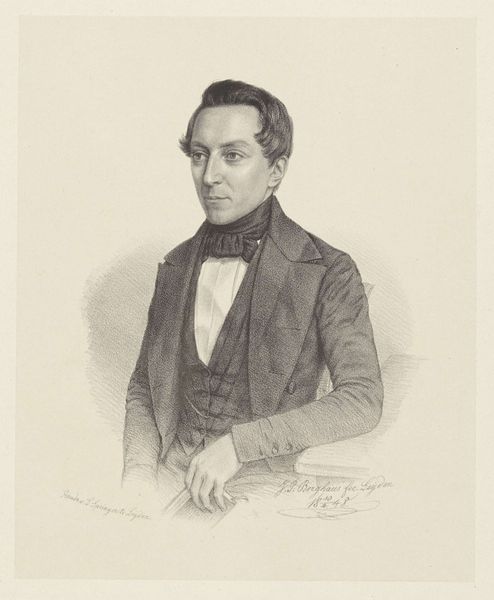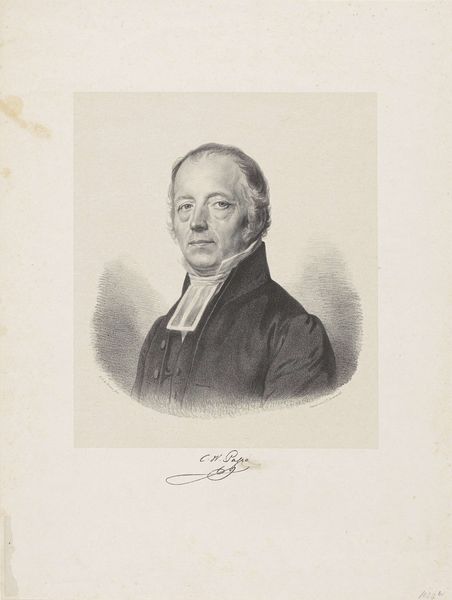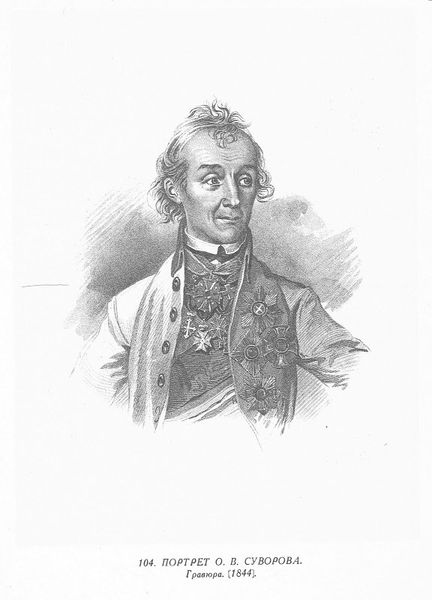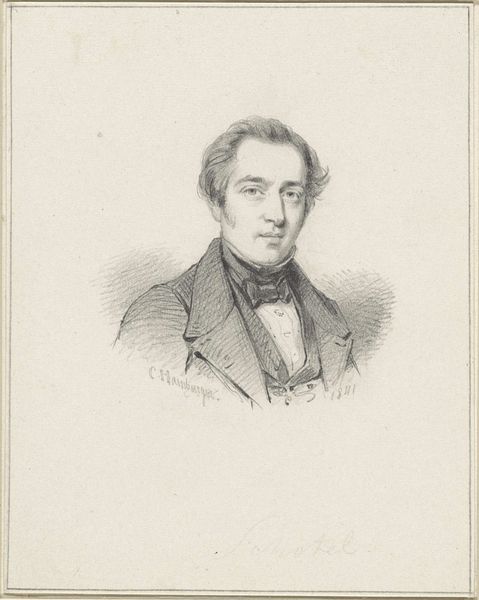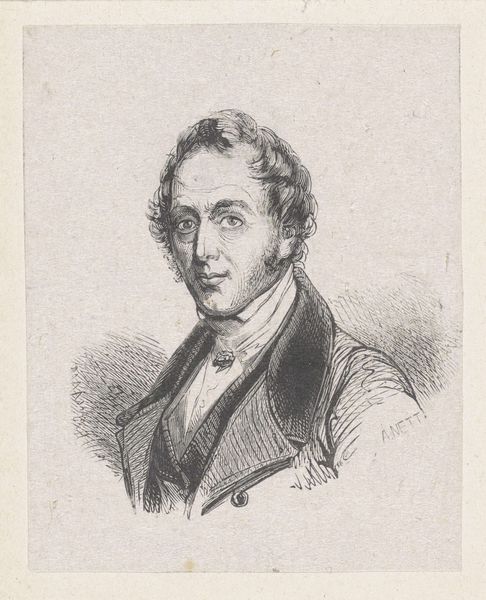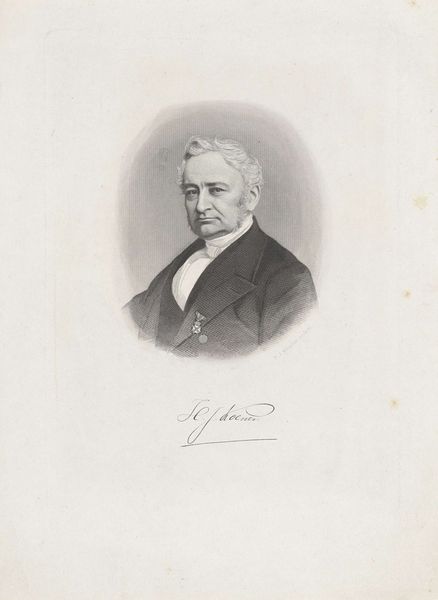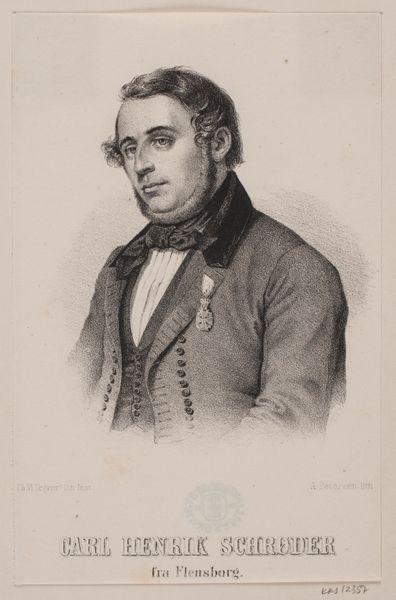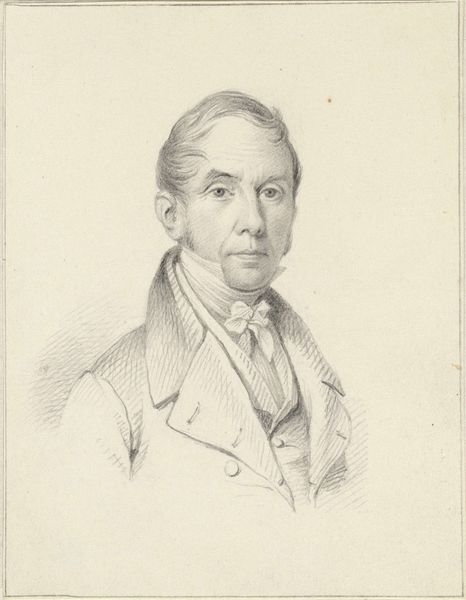
drawing, pencil
#
portrait
#
pencil drawn
#
drawing
#
pencil sketch
#
pencil drawing
#
romanticism
#
pencil
#
portrait drawing
#
academic-art
#
realism
Dimensions: height 380 mm, width 270 mm
Copyright: Rijks Museum: Open Domain
This is a portrait of R.T. Guyot by Jan Ensing, created with lithography. Lithography is a printmaking process that relies on the simple principle that oil and water don't mix. The image is drawn on a flat stone or metal plate with a greasy crayon, then treated with chemicals. When the surface is dampened, the water adheres only to the areas not covered in grease. Ink, which is also oily, sticks to the drawing but is repelled by the wet areas. The image is then transferred to paper using a press. In the 19th century, lithography democratized image production; its relative ease and speed allowed for mass production of prints, fueling the growth of advertising, newspapers, and popular imagery. Ensing's choice of lithography aligns with the increasing accessibility of portraiture during this era, moving away from exclusive painted portraits to more widely available printed likenesses. This shift mirrors broader changes in society, as industrialization and capitalism reshaped social structures and consumption patterns. By considering lithography’s role in mass production, we gain a deeper understanding of this artwork's significance, challenging conventional hierarchies between fine art and commercial processes.
Comments
No comments
Be the first to comment and join the conversation on the ultimate creative platform.


